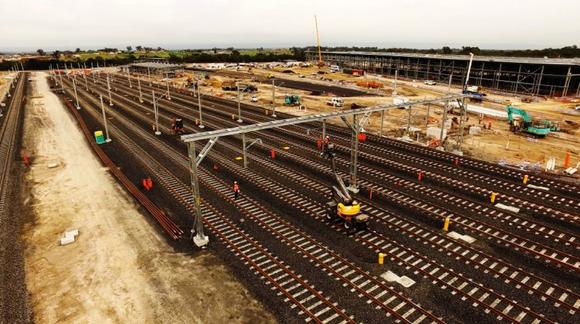The federal budget is being starved of revenue and won’t be nourished enough by improving commodity prices.
That’s the tough message from Treasurer Scott Morrison as he prepares to deliver a critical midyear report on the state of the budget a week before Christmas, news.com reported.
And his alarm on Monday is backed by a report from consultants Deloitte Access Economics that the budget deficit will blow out by $24 billion over the next four years. This means the projected surplus by 2020-21 is unlikely to be delivered.
Mineral exports are the only bright spot for the federal budget, but that’s not going to save you from substantial spending cuts, he said.
The government is hoping the prospect of rising iron ore prices, for example, will help rescue the budget from sinking tax takes from low-growth wages and profits.
But Morrison today is warning improved commodity prices won’t remove the need for spending cuts and business tax reductions.
He will use the final two weeks of the parliamentary year, which begins Monday, to argue for business tax cuts worth some $50 billion over 10 years, and which Labor and the Greens oppose.
The government is expected to highlight support for corporate tax cuts given by opposition leader Bill Shorten when he was assistant treasurer and supporting what now is the coalition line.
“Cutting the company income tax rate increases domestic productivity and domestic investment,” Shorten told parliament in 2011.
“More capital means higher productivity and economic growth and leads to more jobs and higher wages.”
Credit Rating
Labor today added to concerns by warning the nation’s AAA credit rating was at greater risk.
The May budget had a deficit three times the shortfall inherited by Labor, shadow treasurer Chris Bowen and shadow finance minister Jim Chalmers said in a statement Monday.
“It is time for this government to take responsibility for the state of the books and stop pointing the finger at everyone else for their failings,” they said.
Morrison is using the warning from consultants to prepare for substantial spending cuts. “The Deloitte report echoes the comments I have been making for some months by rightly drawing attention to the impact of lower growth in wages and profits growth on government revenues,” the treasurer said in a statement.
“The report also correctly puts in perspective the impact of recent commodity price movements on budget revenues.”
Cautious Approach
“As already flagged, the government will be adopting a cautious approach to commodity price assumptions in MYEFO and agrees with Deloitte that commodity price impacts are being offset by wages and inflation outcomes,” he said.
“The goal of our national economic plan outlined in the budget is to lift what Australians are earning from their wages and their businesses, not tax them more, as Labor propose to do.
“That is why our enterprise tax plan is so important. You can’t expect businesses to earn and invest in providing more hours of work per week for their employees when you are demanding that they keep paying higher taxes.”
Goldman’s Outlook
Goldman Sachs thinks that Australia’s economy “has moved through an important transition point” that will lead to faster economic growth and a higher Australian dollar in the period ahead.
And it could see the RBA lift interest rates as soon as the second half of next year, Business Insider reported.
“We have upgraded our economic growth forecasts for Australia and now forecast economic growth will average 2.8% in 2017, 2.9% in 2018, 3.0% in 2019 and 3.3% in 2020,” said Tim Toohey, Andrew Boak and Bill Zu, Goldman’s Australian economics team.
“This represents a 40 percentage point upgrade in 2017, a 10ppt upgrade in 2018 and a 50ppt upgrade in 2019.”
Reflective of stronger economic growth, Goldman also lifted its AUD/USD forecasts over the next three, six and 12 months to 78 cents, 77 cents and 75 cents respectively.


